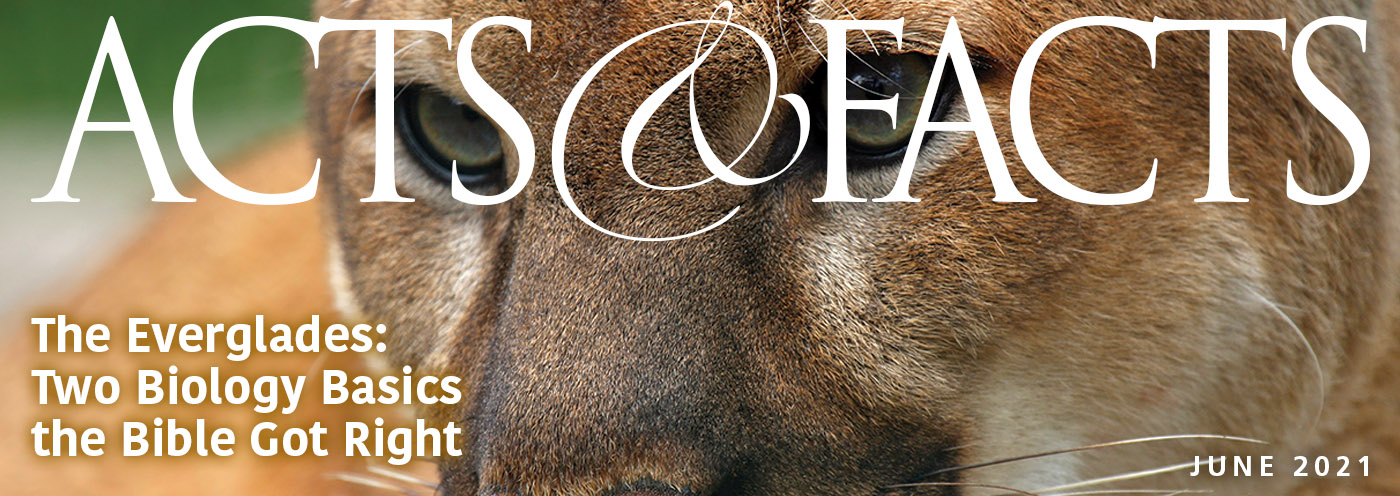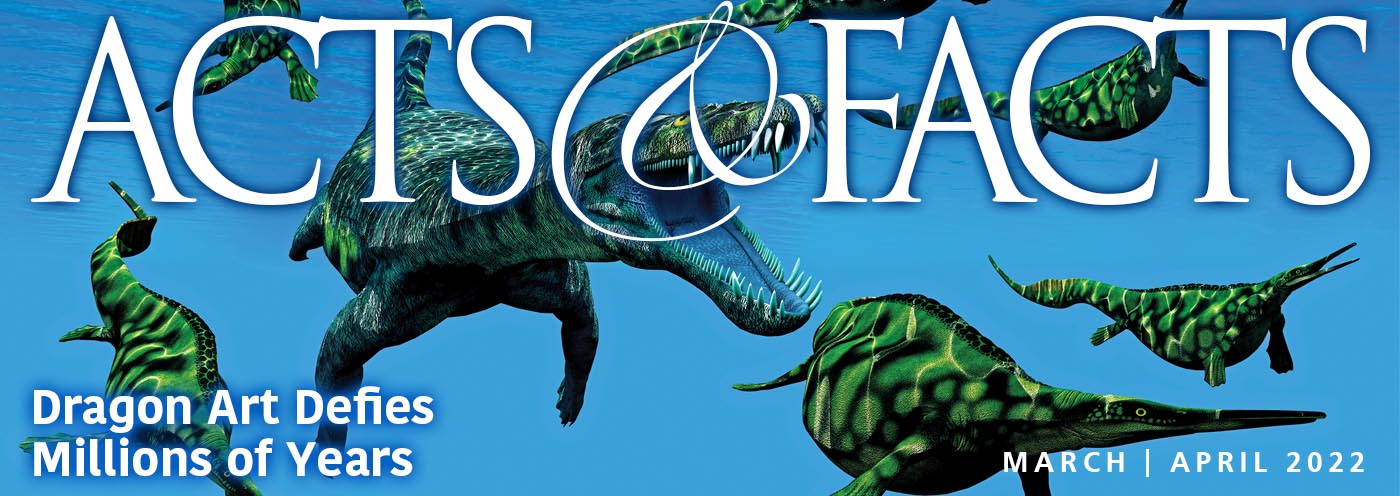The octopus is one of the most amazing animals in God’s creation.1
Now,
A new paper in Genome Biology and Evolution indicates that a type of octopus appears to have evolved independently to develop something resembling a shell, despite having lost the genetic code that produced actual shells in its ancestors and relatives.2 (Emphasis added.)
A number of questions could be asked: How do evolutionists know this creature lost the genetic code that produced actual shells, or how can they say that it evolved independently? Could it be that the octopus was designed to have this “shell-like egg case” in the beginning?
More importantly, did the octopus have evolutionary ancestors? “Cephalopods without shells or with internal shells (such as octopuses and squids) apparently evolved from some early straightshelled ancestor.”3 (Emphasis added.) Another evolutionist stated, “Probably they arose from a belemnite (Belemnitida) forebear, sometime in the early Cretaceous.”4 Do the zoologists really know the origin of the fascinating octopus?
Evolutionists maintain the egg case of the species of octopus called Argonauta argo is like the hard shell of the pearly nautilus (a cephalopod mollusc that appeared in the Cambrian from an unknown ancestor).
Female argonauts [A. argo] have a protective, spiral, shell-like egg case, which protects the eggs inside. Researchers have long wondered about the origin of this egg case. It looks very much like the shell of the commonly known pearly nautilus (the very distant relative of the argonaut), which has a true hard shell and lives on the ocean floor, but that may just be a coincidence.2
Although the nautilus’s shell and argonaut’s egg case look alike, the similarity ends there. They “look dissimilar at the microscopic level,” and they are formed differently. In other words, while the developmental genetics of the two are different, the fact that they look similar is just a coincidence. As the article stated, “This suggests that while the distant ancestors of argonaut octopuses likely had shells, the shells didn't evolve into egg case [emphasis added].”2
The authors use the term synteny, which is “the sharing of the same linear order of genes on the chromosomes (or parts of chromosomes) between different taxa (whether species or higher taxa) subsequent to their evolutionary divergence.”5 Creationists would agree with the definition of the term (which is observed), but openly question the appeal to evolutionary divergence (supposedly occurring mainly in the distant past). Divergence, like convergence,6 presupposes deep evolution.
If features do not conform to preconceived thinking, that is because they could represent “divergence,” “convergence,” “character reversals,” “vestiges,” “rudiments,” “independent losses,” “one-time gains,” “parallel derivatives,” or any of the jargon tagged to subjective evolutionary explanations. Comparing fossils based on similar features suffers from the same trap of circular reasoning, and gene sequence comparisons suffer from the same prejudices, inconsistencies, and excuses. In fact, comparing different sequences from the same organism can lead to very different presumed evolutionary relationships. These facts provide a conversational opportunity to highlight the plasticlike attribute of evolutionary theory to absorb all observations—even ones that are totally contradictory [emphasis added].7
Evolutionists Yoshida and Setiamarga said, “We anticipate that our findings will further the research of metazoan, mollusk, and cephalopod genome evolution, which has remained largely unexplored thus far."2 Creationists predict—on the basis of the creation model—that research into these fascinating genomes will not reveal the evolutionary origins of these groups.
References
1. Sherwin, F. Octopus Genome as Large as Human Genome. Creation Science Update. Posted on ICR.org February 22, 2016, accessed January 10, 2023; Thomas, B. Octopus Skin Inspires High-Tech Camouflage Fabric. Creation Science Update. Posted on ICR.org August 27, 2014, accessed January 10, 2023.2. Science Writer. New research shows how octopuses may have evolved. phys.org Posted on phys.org October 26, 2022, accessed January 11, 2023, and Yoshida, M. et al. 2022. Gene Recruitments and Dismissals in the Argonaut Genome Provide Insights into Pelagic Lifestyle Adaptation and Shell-like Eggcase Reacquisition. Genome Biology and Evolution. V 14, Issue 11.
3. Hickman, C. et al. 2020. Integrated Principles of Zoology. McGraw-Hill. 360.
4. Allaby, M. 2020. Oxford Dictionary of Zoology. Oxford University Press. 419.
5. Thain, M. and M. Hickman. 2004. Dictionary of Biology. Penguin Reference. 680.
6. Guliuzza, R. Major Evolutionary Blunders: Convergent Evolution Is a Seductive Intellectual Swindle. Acts & Facts, Posted on ICR.org February 28, 2019, accessed January 13, 2023.
7. Guliuzza, R. Similar Features Show Design, not Universal Common Descent. Acts & Facts. Posted on ICR.org October 1, 2010, accessed January 13, 2023.
* Dr. Sherwin is science news writer at the Institute for Creation Research. He earned an M.A. in zoology from the University of Northern Colorado and received an Honorary Doctorate of Science from Pensacola Christian College.
















